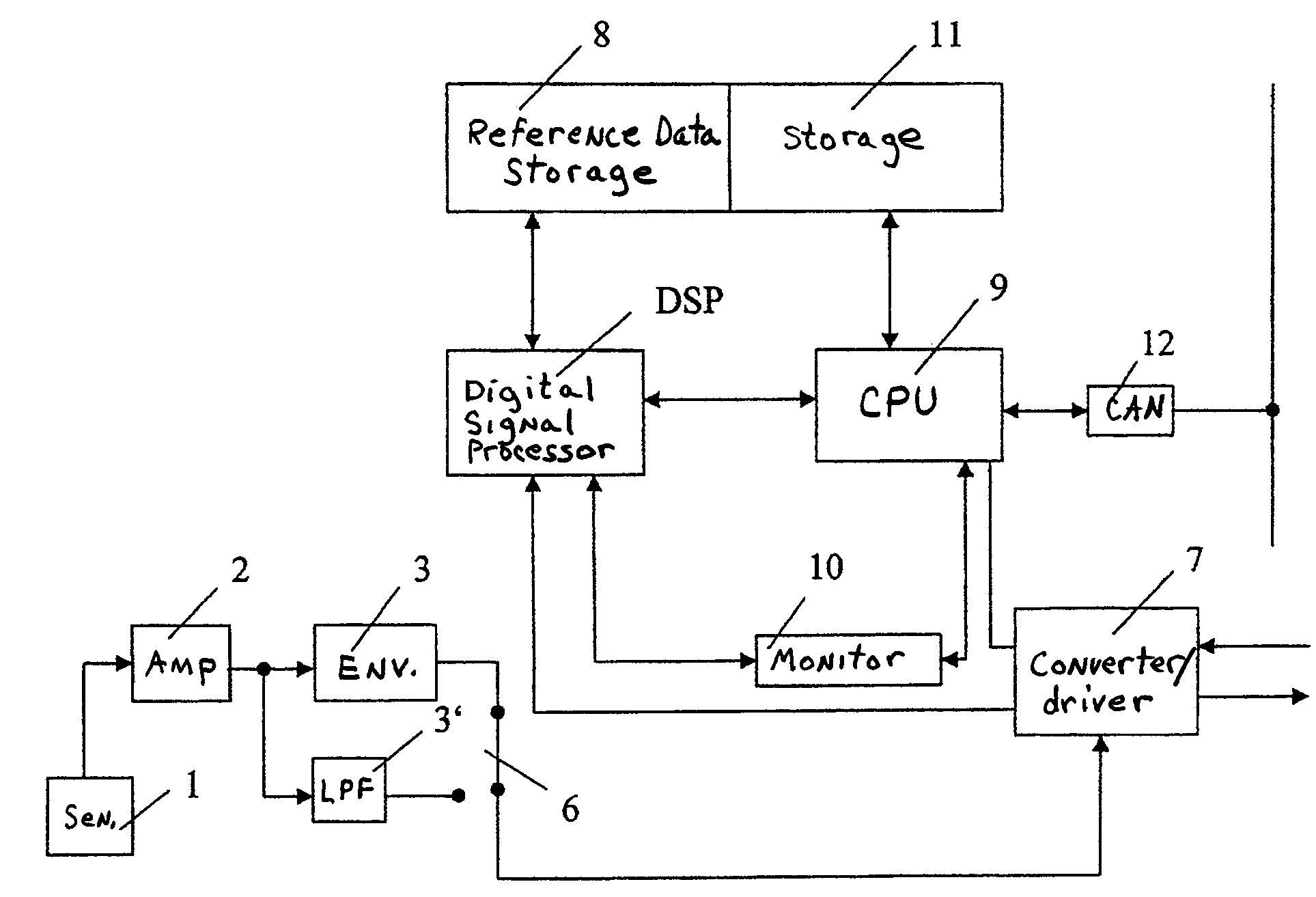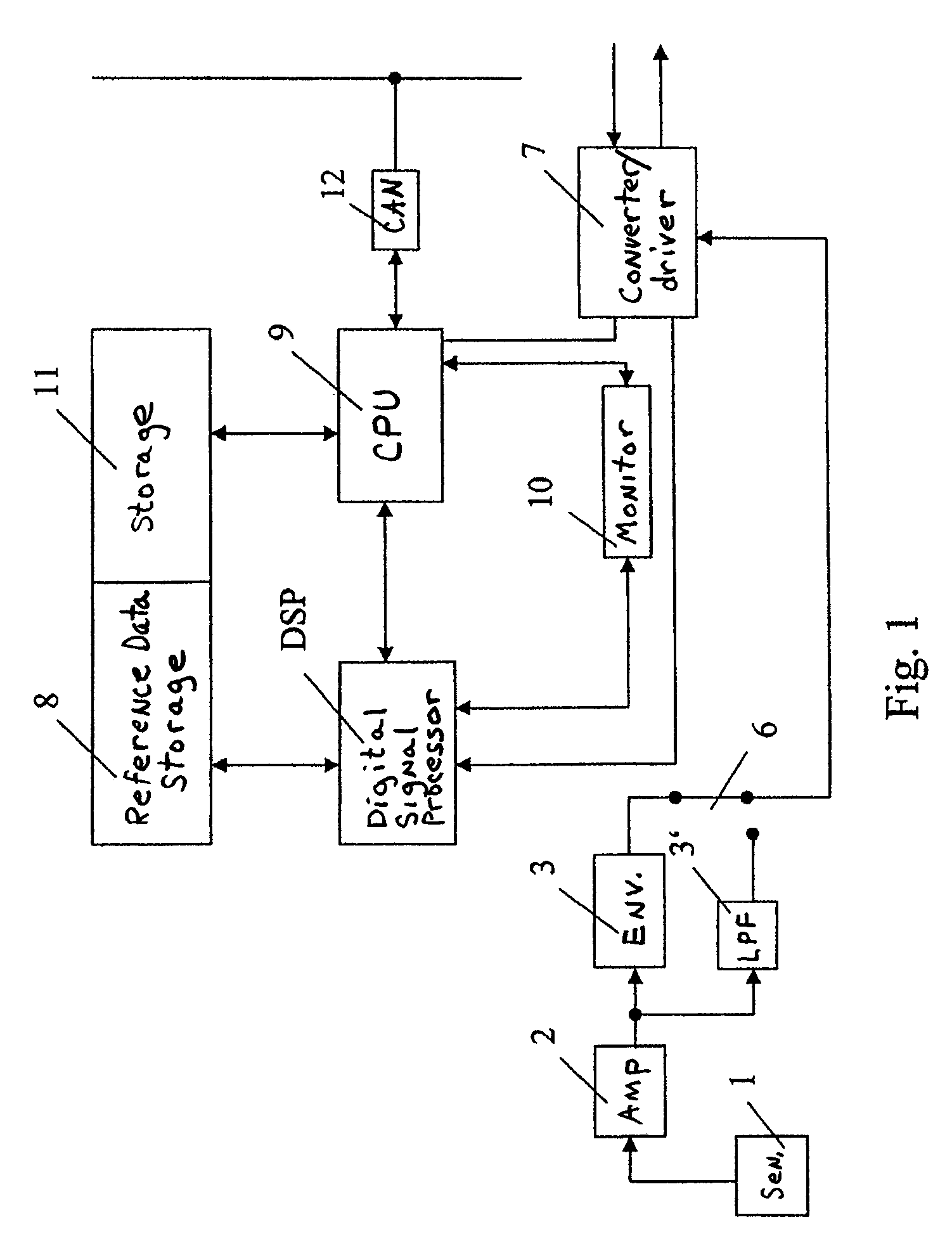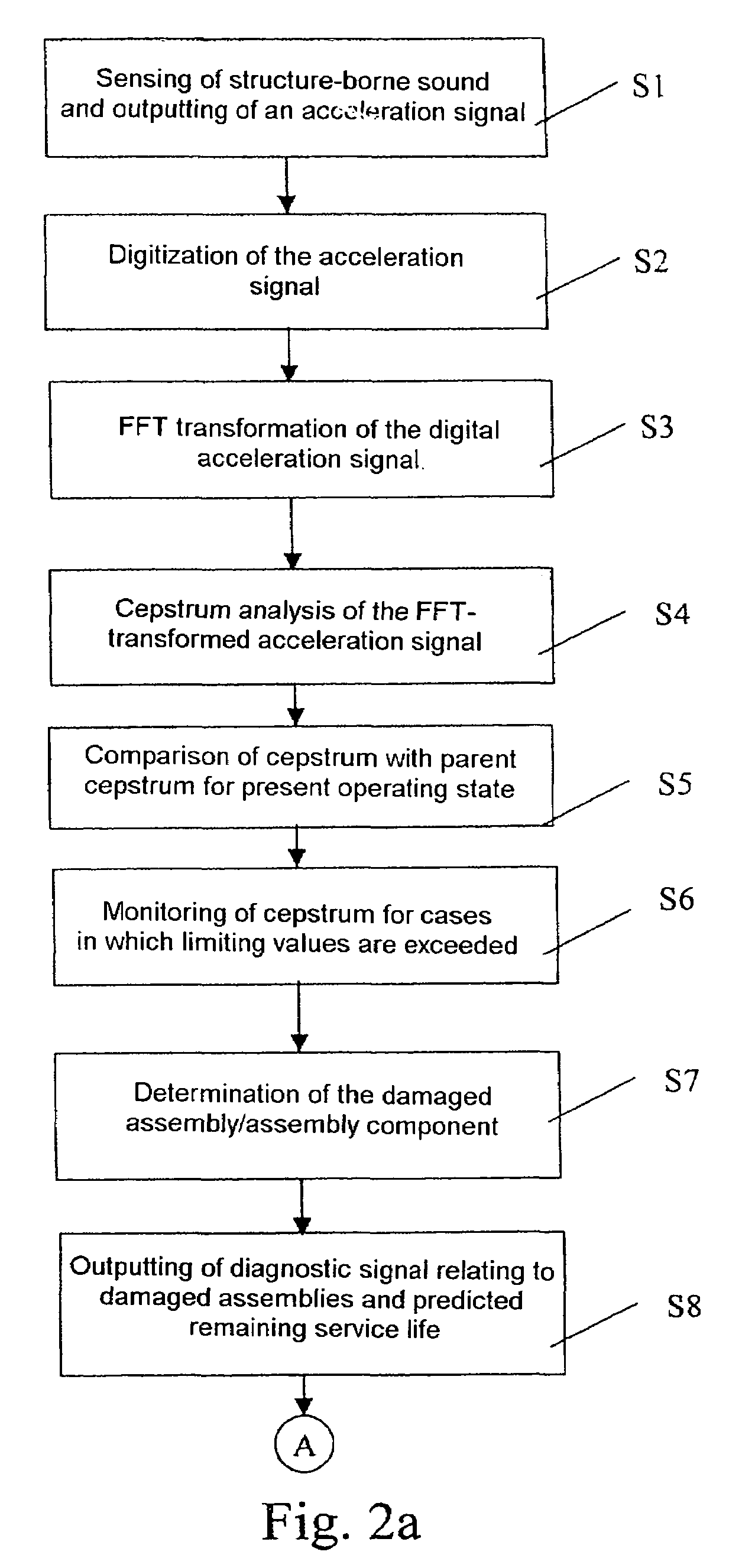Device and method for the early recognition and prediction of unit damage
a technology of unit damage and detection method, which is applied in the direction of instruments, nuclear elements, nuclear engineering, etc., can solve the problems of aging of lubricant, inability to predict the damage of assemblies, and wear of susceptible parts such as brake linings and clutch linings
- Summary
- Abstract
- Description
- Claims
- Application Information
AI Technical Summary
Benefits of technology
Problems solved by technology
Method used
Image
Examples
Embodiment Construction
[0025]A device for the early detection and prediction of damage to assemblies, which can be used in a mobile machine plant (for example, a drive train), will now be described with reference to FIG. 1. Damage to the drive train or drive train components (for example, the steering system, engine, gearbox, crankshaft, brake system, retarder, etc.) can de detected.
[0026]In the device according to the invention, a sensor 1, such as an acceleration pickup for sensing structure-borne sound in a machine plant, is arranged on the machine plant to be monitored, and is connected at its output to an amplifier device 2. The output of the amplifier device 2 is in turn connected both to an envelope curve forming device 3, and to a low-pass filter device 3′. The output of the envelope curve forming device 3 is connected to a first switched position of a switching device 6, while the output of the low-pass filter device 3′ is connected to a second switched position of the switching device. The outpu...
PUM
 Login to View More
Login to View More Abstract
Description
Claims
Application Information
 Login to View More
Login to View More - R&D
- Intellectual Property
- Life Sciences
- Materials
- Tech Scout
- Unparalleled Data Quality
- Higher Quality Content
- 60% Fewer Hallucinations
Browse by: Latest US Patents, China's latest patents, Technical Efficacy Thesaurus, Application Domain, Technology Topic, Popular Technical Reports.
© 2025 PatSnap. All rights reserved.Legal|Privacy policy|Modern Slavery Act Transparency Statement|Sitemap|About US| Contact US: help@patsnap.com



